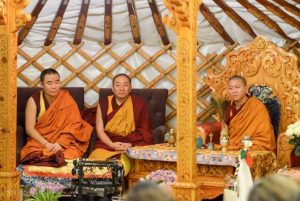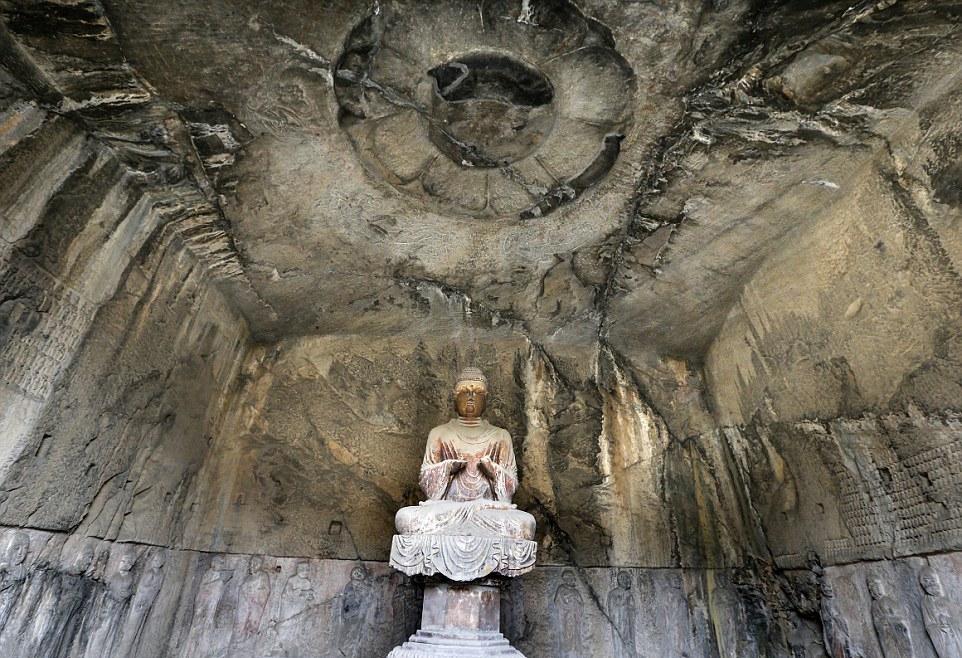
The Longmen Grottoes, whose name translates into English as “Dragon’s Gate Grottoes,” are located along a one-kilometer stretch of cliffs on either side of the Yi River, 12 kilometers south of present-day Luoyang in China’s Henan Province. Comprising some 2,345 caves containing 110,000 Buddhist stone statues, more than 60 stupas, and 2,800 inscriptions carved on steles, the limestone grottoes were carved between the end of the 5th century and the mid-8th century, and are of great artistic importance. Thirty per cent were created during the late Northern Wei dynasty (386–535), 60 per cent during the Tang dynasty (618–907), and 10 per cent during other periods.
On 10 March this year, one cave temple that has rarely been open to the public during the last 63 years was finally made available for viewing by visitors. The Kanjing Royal Cave Temple contains 29 roughly life-size (average 5ft 7ins tall) relief carvings of arhats (ones who have attained the state of nirvana) on the lower register of the walls, carved during the Tang dynasty between 690 and 704 and said to be some of the best examples of arhats of the period (Falco Howard 2006, 299). Representing the great patriarchs who transmitted the Buddhist teachings and starting with Mahakashyapa, the arhats are realistically depicted and shown in interaction with each other. Reliefs of apsarasa are also visible on the cave’s ceiling. According to the China Daily, the temple had been generally closed to the public in order to preserve the remaining artwork.
“The Arhat statues inside the cave were extremely intricate and vividly carved. They carry great significance in the study of the relief sculpture art from Tang Dynasty, the fashion of monks and their music instrument as well as the Zen [Chan] Buddhism at the era,” said the director of the Longmen Grottoes Research Centre, Lu Wei. (Mail Online)
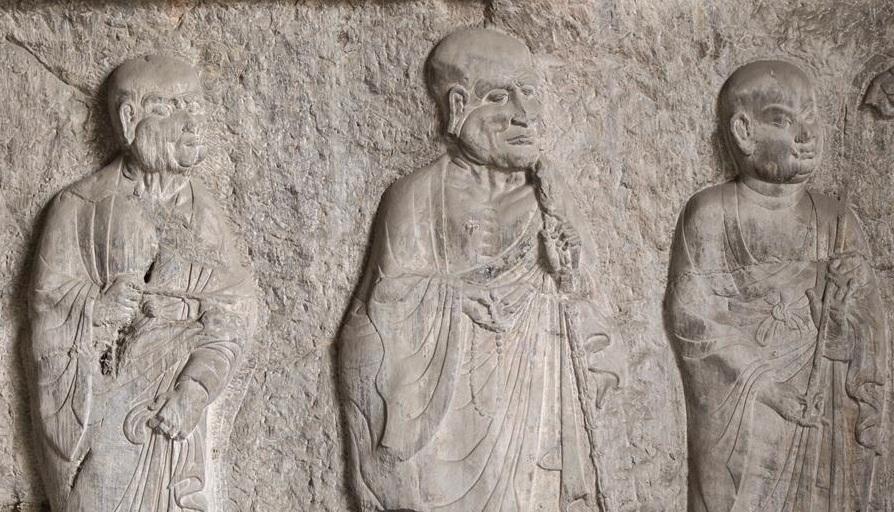
At 30 feet high, 33 feet deep, and 34 feet wide, the Kanjing Temple is one of the largest grottoes on the mountain. It was carved initially as an imperial shrine for Wu Zetian (624–705), who ruled unofficially as empress, and later as emperor, of China, making her the only female emperor of the country in over 4,000 years. The cave was further carved during the reign of her grandson, Emperor Xuanzong (r. 712–56), the seventh emperor of the Tang. Unfortunately, during the Chinese Cultural Revolution from 1966–76, like so many other national treasures, much of the temple was also tragically destroyed. As a result, the main statue is not the original one, but a similar example placed there by archaeologists.
The Longmen Grottoes were first carved during the reign of Emperor Xiaowen (r. 471–99) of the Northern Wei dynasty, who relocated his capital to Luoyang from Datong. The Guyang Cave, in the central part of the West Hill, is believed to have been built by him, and is considered the oldest cave in the grottoes. It contains an image of the historical Buddha, Shakyamuni, flanked by two bodhisattvas. Emperor Xiaowen’s son, Emperor Xuanwu (r. 499–515), continued the construction of the grottoes with the Three Binyang Caves. The Binyang Middle Cave in particular is a masterpiece of the stone-carving art of the era, and was built over a 24-year period. It contains three groups of Buddha and bodhisattva images, those on the rear wall with the addition of two disciples. The main figure is again Shakyamuni, depicted with a high nose and large eyes. This cave is said to have been built in imitation of the Lingyansi Cave at the Yungang Grottoes, near the earlier Northern Wei capital, Datong.
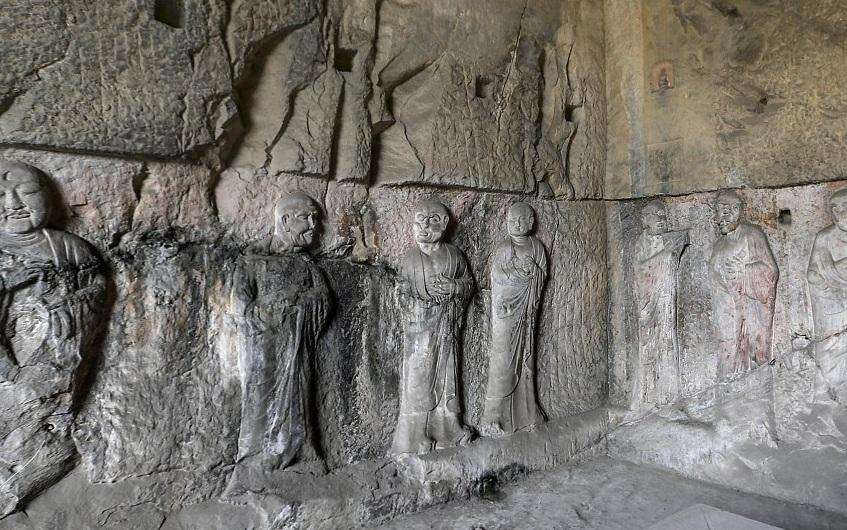
The drapery of the Buddha images in these early caves at Longmen is, however, artistically different to that at Yungang, being more Chinese in style (the Northern Wei emperors were not Chinese, but of the Tuoba clan of the Xianbei), with a sinuous cascade of drapery falling over a flattened figure. This is known as the “Longmen style,” in contrast to the blockier “Yungang style,” which represents foreign influences traceable to the Buddhist art of India.
While the Guyang Cave and the Three Binyang Caves contain large Buddha figures, the Yaofang Cave, constructed in 570, contains 140 inscriptions carved at the entrance on both walls that record the treatments for various medical problems, from the common cold to insanity. The Fengxian Cave, another Royal Cave Temple built for Wu Zetian, contains the largest Buddha image in all the Longmen Grottoes: that of the Buddha Vairochana. It has a total height of 56 ft, each ear alone measuring 6 ft, and a plump body with crisply carved drapery, considered typical of the Tang dynasty style. The two sculptural styles, the earlier “Central China style” and the later “Great Tang style,” were both highly influential within China, and also had a significant impact on the evolution of statuary in other parts of Asia.
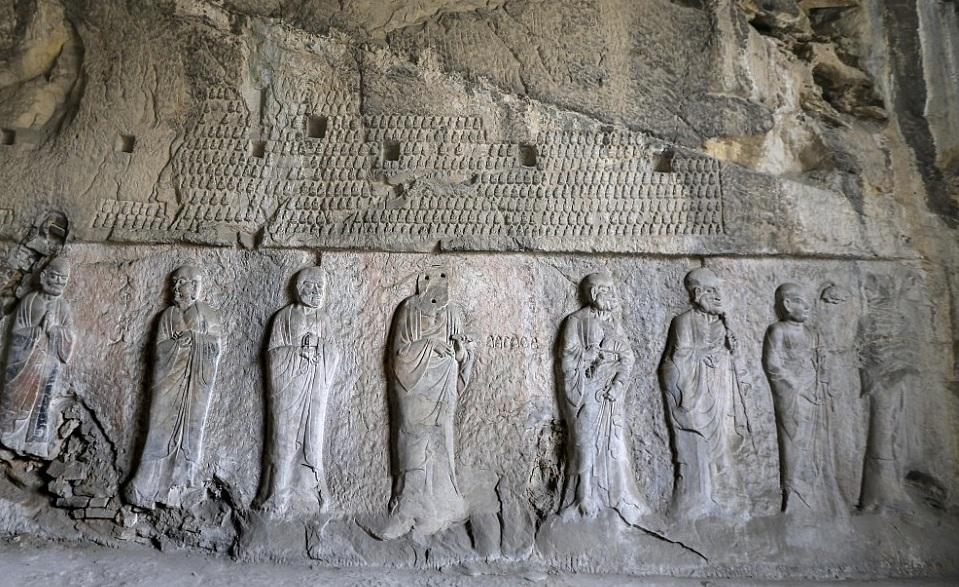
In 2000, the Longmen Grottoes were inscribed on the UNESCO World Heritage List based on the following three criteria: (1) The sculptures are an outstanding manifestation of human artistic creativity; (2) The Longmen Grottoes illustrate the perfection of a long-established art form which was to play a highly significant role in the cultural evolution in this region of Asia; and (3) The high cultural level and sophisticated society of Tang dynasty China are encapsulated in the exceptional stone carvings of the grottoes. (UNESCO)
The Longmen Grottoes, including their statues, inscriptions, and other artifacts, are today in a good state of preservation. Under the Law of the People’s Republic of China on the Protection of Cultural Relics, the caves are given priority protection. The Regulations of Luoyang City on the Protection and Management of Longmen Grottoes have guaranteed their legal protection, and the natural landscape and ecological environment that have existed since the late 5th century have been maintained. The Management Agency of the Ministry of Culture of the PRC works with the Research Institute of Luoyang City together with professional teams on the protection, publicity, and presentation of and education about the caves. According to The Conservation Plan of the Longmen Grottoes drafted by The Management Agency, research capabilities have been strengthened, including the analysis of the deterioration mechanism of the caves, environmental monitoring, conservation materials, and control measures, thus ensuring that a balance between protection and development of the site is maintained.
References
Falco Howard, Angela. 2006. Chinese Sculpture. Yale University Press.
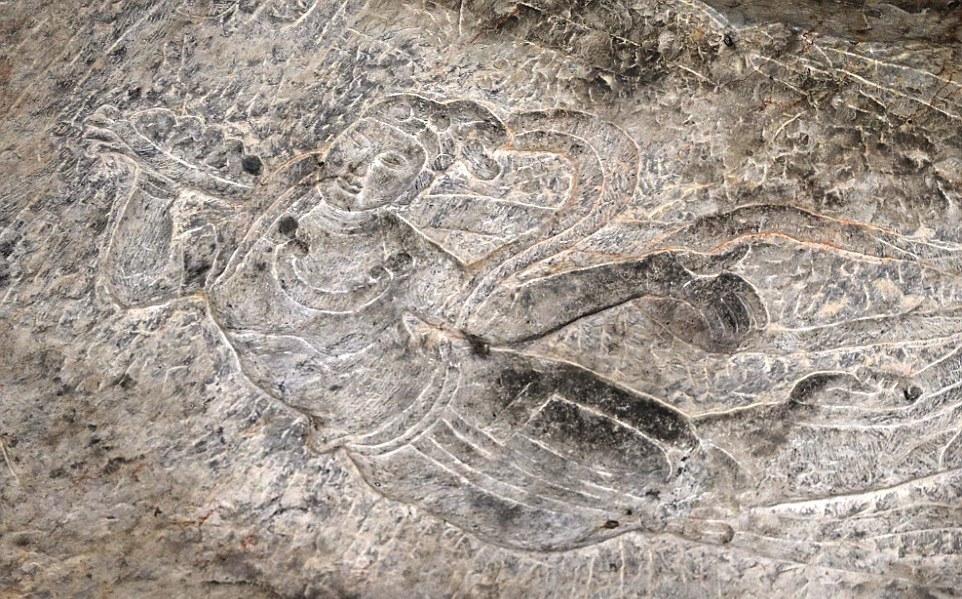
See more
Longmen Grottoes (UNESCO)
Longmen caves (Encyclopedia Britannica)
Longmen Grottoes (Wikipedia)
Longmen Grottoes to open ‘royal cave temple’ in 63 years (China Daily)
China’s Hidden Cave Temple Will Soon Be Open to the Public (Mental floss)
The secret chamber of Zen: The Royal Cave Temple (Mail Online)










